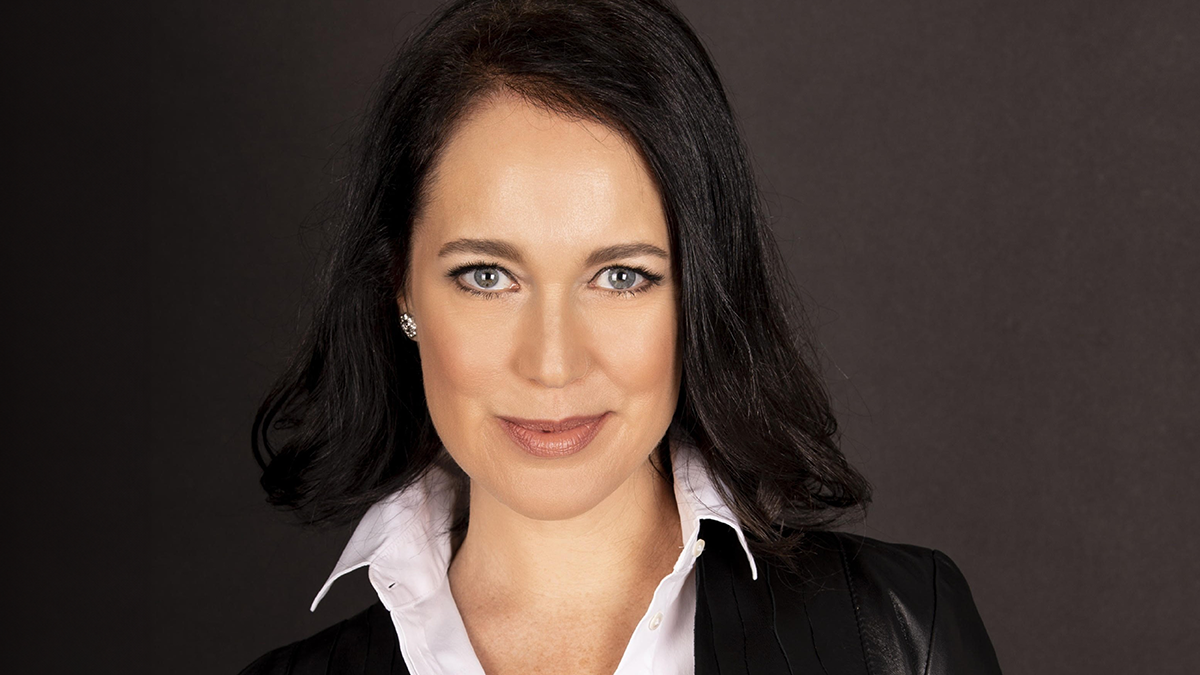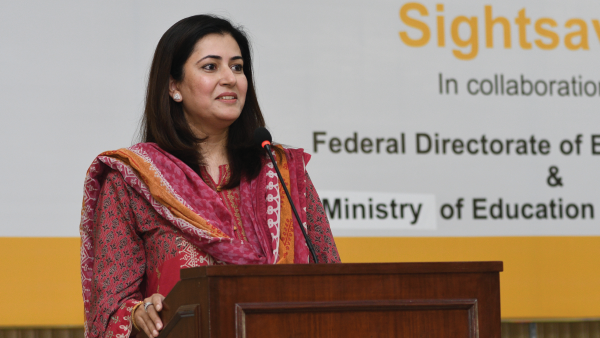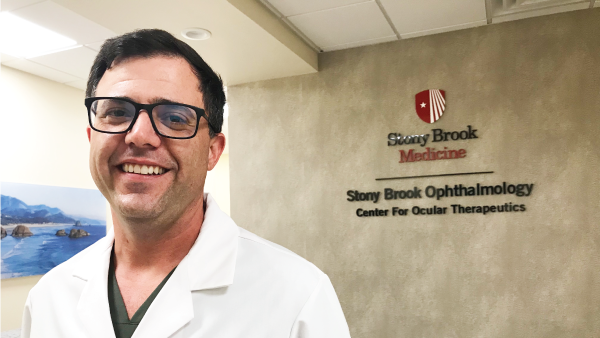The Èyes Are The Story… Story
Founder Amy Gallant Sullivan outlines her mission in leading a unique wellness-meets-beauty brand focused on eye health
What was the spark behind Èyes Are The Story?
Growing up in a family of healthcare professionals, I was always surrounded by science and medicine. My father is David A. Sullivan, former Associate Professor of Ophthalmology at Harvard Medical School. My brother is Benjamin D. Sullivan, creator of TearLab, which is now known as ScoutPro (Trukera Medical). And my mother Rose is an intensive care nurse by training, who happens to have dry eye disease (DED) and meibomian gland dysfunction (MGD)! So, dry eye and ocular surface disease (OSD) were dinner table topics for our family pretty much all of my life. And when we set up the Tear Film & Ocular Surface Society (TFOS) to advance the research, literacy, and educational aspects of the scientific field of the tear film and ocular surface, I discovered the unmet need for eye-safe consumer products.
But the “aha” moment really came when I discovered that DED is twice as prevalent in women as in men. I thought, what is it women do more than men? Cosmetics. Women use about 12 products per day, men only six. I started looking at products, beginning with mascara, as it’s one of the most ubiquitously used eye makeup products. I found that BAK (benzalkonium chloride), a preservative in glaucoma meds, is also found in many cosmetics, including eye makeup – and the concentration permitted in cosmetics is thousands of times higher than that in glaucoma meds.
So, I began researching the link between cosmetics and dry eyes. Two decades later, blurring the lines between beauty and pharma, I launched Èyes Are The Story – the world’s first cosmetics and skincare formulated for sensitive eyes. (I’ve trademarked the term “optocosmetics.”) Because of my work with TFOS and access to research on ocular surface disease, I obligate my labs to implement extra trials to validate safety and efficacy for sensitive eyes and skin, dry eyes, and contact lens users. I collaborate with laboratories in the US, Canada, and Italy. The recent TFOS Lifestyle Report on the Impact of Cosmetics on the Ocular Surface further verifies my findings and justifies why our products should be integrated into the patient offerings of eye care professionals (ECPs). After all, ECPs should be the gatekeepers and protectors of eye health – not the makeup professionals in Harrods’ Beauty Hall or Boots.
You have a successful history of starting companies – why was it the right time to launch Èyes Are The Story?
Interestingly, a recent report said that the global eye skin care market is projected to be worth $19.2 billion in 2023 and will reach $35.5 billion by 2033. This market has experienced significant growth in recent years due to increasing awareness among consumers about the rising prevalence of eye diseases like dry eye and blepharitis. I’ve been working in the OSD space for 20 years and have witnessed firsthand the increased market awareness about eye health. I began writing publicly about the impact of cosmetics on eye health more than 10 years ago, before it had become a thing! Many people say that I am responsible for creating this awareness – I’m definitely the first to create the market-focus for cosmetics made for sensitive eyes. That said, there is still so much education necessary, as ECPs are largely not aware of how lifestyle choices such as cosmetics can impact their diagnoses, efficacy of treatments, and management of OSD.
I finally took the step to building the brand by registering my idea, along with ÈSSIRI Labs, the parent company, in 2016. I never expected to launch during the 2020 pandemic, but this added an interesting angle to “The Story!” I couldn’t wait longer, as I needed to be the first-to-market. The hyper-awareness of healthy living caused by the pandemic was oddly perfect timing – I literally had a “captive audience” of sensitive eyes with everyone staring at their screens all day.
Since I launched Èyes Are The Story, it has been incredible to see the uptick in awareness and demand for more transparency about regulations and ingredients in cosmetics. The US market is still way behind from a regulatory perspective – 11 chemicals are banned there for the formulation of cosmetics, whereas there are more than 1300 chemicals banned in the European Union (EU). I have so far received authorization to sell in more than 30 countries, and Èyes Are The Story products are already available in nine countries (including US, France, Australia, and the UK) – not an easy feat, especially as most US cosmetics brands would never meet regulatory requirements in the EU due to their strictness.
What is the challenge of broadly communicating the message about safety issues related to traditional eye makeup?
No message is easy to disseminate. A key challenge pops up when our message offers new education that contradicts the big, glitzy brands. Whether it’s a celebrity-backed brand or one with a “doctor” brand ambassador, messages are heard where there is the biggest marketing budget. And that’s another reason why we launched with the help of eye care professionals around the world – we don’t have just one MD or OD backing the brand, but a multitude of key opinion leaders (KOLs). Endorsement from global KOLs definitely holds power and impact.
But it truly takes a village to properly disseminate a message – and that too requires an extraordinary amount of money. We need the eye care KOLs to step forward and share their thoughts, and encourage their patients to change their choices of cosmetics and skincare. This is not just about marketing for us, we are actually helping people with our brand. Many DED and rosacea patients around the world have seen their quality of life improve by switching to Èyes Are The Story – both women and men.
What do you want to communicate to UK optometrists and other ECPs about Èyes Are the Story?
Mainstream cosmetics can impact the diagnosis, treatment, and management of eye diseases! Studies show that eyes suffer multiple adverse reactions to makeup and skincare, including ocular irritation, blepharitis, meibomian gland dysfunction, allergies, and dry eye disease. Many products that we use on and around our eyes can include ingredients that are not eye friendly, from retinols, to salicylic acid, to tea tree oil…even nasties like parabens, phenoxyethanol, and benzalkonium chloride.
But you’ll not find any of those in Èyes Are The Story products.
Our portfolio includes eye-safe skincare and color cosmetics; our products can be used in-clinic and added to patient protocols. I recommend that clinics begin “The Story” of eye-safe cosmetics with their patients by integrating Èyes Are The Story into daily routines – reminding patients, for example, that color cosmetics should never be applied on dirty or untreated eyelids. Patients need to see ECPs as experts in all things associated with the eyes, including cosmetics, which provides another opportunity to provide better care. ECPs can be more effective in their efforts when they involve their whole practice in esthetic care, and ideally optimize patients’ experience – from treatment to at-home maintenance.
We have blacklisted toxic ingredients found in mainstream cosmetics and skincare products, developing highly effective products without asking patients to pay the ultimate price – which is damage to their eye health.
The New Optometrist Newsletter
Permission Statement
By opting-in, you agree to receive email communications from The New Optometrist. You will stay up-to-date with optometry content, news, events and sponsors information.
You can view our privacy policy here
Most Popular
Sign up to The New Optometrist Updates
Permission Statement
By opting-in, you agree to receive email communications from The New Optometrist. You will stay up-to-date with optometry content, news, events and sponsors information.
You can view our privacy policy here
Sign up to The New Optometrist Updates
Permission Statement
By opting-in, you agree to receive email communications from The New Optometrist. You will stay up-to-date with optometry content, news, events and sponsors information.
You can view our privacy policy here







